Traveling with Photo Equipment
First penned in 2013, most recently updated May 17, 2022
OK, we’ve talked about preparation for your trip and getting there and back, along with some tips for transportation. Many of us are photographers, and we carry a special set of challenges in today’s world of travel. For one, we generally have more baggage than your average traveler.
TRAVELING WITH PHOTO EQUIPMENT
The Airline Rules
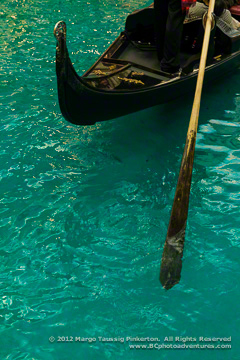 In the United States, we fall under the regulations of the Transportation Security Administration, more commonly known as TSA. Generally, professional photographers have been given the latitude of carrying an extra carry-on bag, filled with only photo equipment, smaller than a regular carry-on bag, and subject, as always, to the whims of your airline carrier.
In the United States, we fall under the regulations of the Transportation Security Administration, more commonly known as TSA. Generally, professional photographers have been given the latitude of carrying an extra carry-on bag, filled with only photo equipment, smaller than a regular carry-on bag, and subject, as always, to the whims of your airline carrier.
Knock on wood, of course. When I tried to access the TSA’s regulations for photographers for this blog, I came up against dead end after dead end, those 404, no-go, defunct pages.
I even tried to write to TSA, but too fell into the Black Hole of Calcutta.
The safest thing is always to call your airline and find out what they allow. Arnie and I have never had an issue, but we are careful to consolidate as much as possible. If we are questioned, we have proof of membership in a professional organization, ASMP in our case.
Camera Equipment
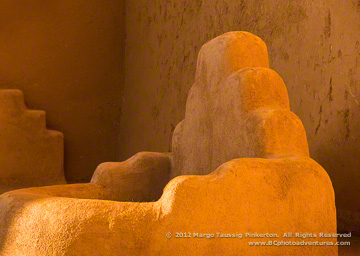 In an effort to advertise, advertise, advertise, most of the camera manufacturers these days make sure that you and everyone around you knows what camera you own. Not only is the make and model emblazoned across the front of your camera, but the strap is bright and highly visible in its identifying your camera’s make and model.
In an effort to advertise, advertise, advertise, most of the camera manufacturers these days make sure that you and everyone around you knows what camera you own. Not only is the make and model emblazoned across the front of your camera, but the strap is bright and highly visible in its identifying your camera’s make and model.
The first thing we do when we get a new camera is, in Arnie’s case, take a black, laundry pen and mark out the tell-tale stripe and lettering on the strap. I have a generic padded strap with suede that keeps my camera where I want it. Mine is made by Tamrac and is probably no longer made. If you travel a lot, you may want to consider a strap with metal running through it, so that would-be thieves can’t just cut the strap and abscond with your camera and lens.
Although we don’t happen to do it, there are some who take a small strip of black gaffers tape and cover up the brand and model of your camera.
Carrying your camera is another issue that often invites trouble. We carry our cameras with the lens facing in toward our bodies, nestled behind us, with our hands always on it and the lens. In a crowd, with your camera around your neck, lens facing out, or over your shoulder, again lens facing out, experienced thieves can divest you of your lens without your even knowing it happened.
Carrying your camera tucked in behind you serves two purposes. 1) You are not advertising to the world what kind of camera you own, and 2) tucked behind you, it is less likely to bank into things, whether buildings, other hard objects, or trees whose branches could scratch your lens. And please, always use your lens shade. It is designed to not only reduce lens flare, but protect your lens and in case of being dropped, it will absorb the brunt of the fall, then pop off, rather than break and scratch your equipment.
The Bag
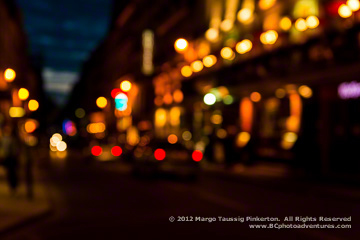 There are so many options for camera bags, it boggles the mind. I have used anything from an old L.L. Bean backpack when I did a lot of traveling alone, to a camera bag I partially designed several decades ago, to two that seem to work for now. One carries all my gear, while the other works for a pared-down kit. All had/have padding to protect the contents, and all could/can be converted to a fanny pack. Arnie uses a combination of ThinkTank units for his gear.
There are so many options for camera bags, it boggles the mind. I have used anything from an old L.L. Bean backpack when I did a lot of traveling alone, to a camera bag I partially designed several decades ago, to two that seem to work for now. One carries all my gear, while the other works for a pared-down kit. All had/have padding to protect the contents, and all could/can be converted to a fanny pack. Arnie uses a combination of ThinkTank units for his gear.
I tend to avoid all black, as that is a sure sign of camera gear, instead opting for bags with color. Arnie sticks to his all-black mode. Whatever you carry, it has to work for you. Arnie wouldn’t be caught dead with my bag, and I avoid his type like the plague.
Many people like to work with a camera vest. I don’t, as it is another sure sign for wanna-be thieves of lots of good equipment to steal. That said, it can help get some heavy lenses onto an airplane and avoid weight issues.
The Camera Bag Contents
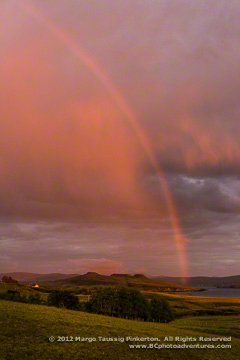 When traveling, it is good to remember that in many locations, replacing gear may be next to impossible. Better to carry any extras you might need. In my camera bag, I carry the following:
When traveling, it is good to remember that in many locations, replacing gear may be next to impossible. Better to carry any extras you might need. In my camera bag, I carry the following:
- Packet or two of Kleenex (ladies, take note) stored in a rain-proof plastic bag
- Cheapo plastic poncho
- Couple of rain sleeves for my camera
- A Ziploc bag containing the following:
- Two or three elastic bands, the thick kind that the post office uses when delivering your mail
- Treble bubble or double bubble level
- A couple of quarters (useful in lieu of a screwdriver)
- Lightweight, plastic compass
- Small, lightweight mirror (for emergencies and for fill light)
- Allen wrenches for tripod and ball head put in smaller plastic bag (these usually come in a small bag)
- Another Ziploc bag containing the following:
- ROR (Residual Oil Remover) or cleaning lenses and contact points on lens and camera body; for air travel, these initially travel in the quart-size bag with other carry-on liquids)
- Three or four lens-cleaning cloths (not to be confused with eye-glass-cleaning cloths!)
- Giotto Rocket air blower, black for Arnie, red for me
- Two extra camera batteries with their protective covers (I bundle my charged ones together with an elastic band; batteries needing recharging are out of the elastic band)
- Waterproof holder for extra flash cards
- Remote cable release & extra battery/ies
- Neutral-density filter
- Thin, circular Polarizer
- Extra lens caps, preferably made by your camera manufacturer (the cheap ones generally don’t work as well)
- Extra business cards in a zip-top bag
- Couple of pens
- Mini tripod
- Small, 12″ reflectors
- Hoodman loupe (indespensable)
- 2 carabiners hooked to the outside of the bag for holding water bottles, etc.
- Powerful mini flashlight with extra batteries
- Lens hoods/shades for each of my lenses (these are not interchangeable but may be stored on the lens facing backwards to save space)
- Sturdy monopod, if you have one, can be either put inside your bag (more discreet) or strapped to the outside (take the ball head off first)
- Remember, your tripod can be packed in your duffel or roll-on with the ball head off
One’s choice of lenses is a personal one as well as one’s selection of other filters.
The Computer Bag/Briefcase Contents
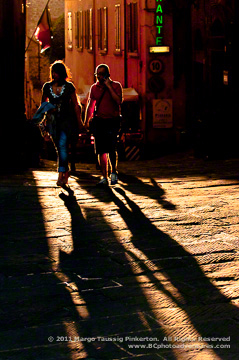 In my backpack computer bag, I carry the following:
In my backpack computer bag, I carry the following:
- Laptop & cord
- Passport folder
- Two or three thin plastic folders for receipts and paper work
- Ziploc bag containing battery charger for camera and cord
- Ziploc bag containing card reader (it is recommended to never link your camera directly to your computer)
- Extra business cards (in zip-top bag)
- 2 more pens
- 10-12 of my address labels (can be used for plane-side check stubs, forms, etc.)
- External hard drives (we use 2TB Western Digital My Passports) for storage and backup
- Zip-top bag containing:
- 2 cell phone USB cords (always good to have an extra)
- Cell phone plug-in adapter
- Extra USB cable (in case one of your non-cell ones fail
- USB cable for GPS unit
- Another Ziploc bag containing the following:
- Ethernet cable for those times when WiFi is not available
- Foreign-plug adapters for overseas travel
There are always more things that you can add to your kit, depending upon your personal likes and needs, but these lists should get you started.
Smart Phone
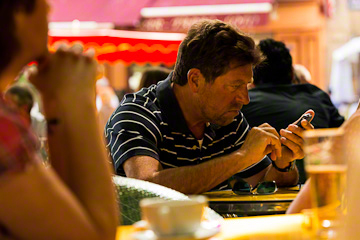 Don’t laugh, this is one of the most important pieces of luggage, aside from the camera gear, that I have. On my iPhone (Droids have the same apps or similar apps), I have loaded the following, organized by category:
Don’t laugh, this is one of the most important pieces of luggage, aside from the camera gear, that I have. On my iPhone (Droids have the same apps or similar apps), I have loaded the following, organized by category:
- Photo/Video:
- ProCamera, a more sophisticated cell camera for those times when I cannot take a “real camera”
- 360, an in-phone panorama maker
- Easy Release, for those times when I need a model or property release
- Camera Buddy, for sun/moon, exposure, depth-of -field, diffraction, and other calculations
- TPE, The Photographer’s Ephemeris, for sun and moon data
- Navigation:
- Google Maps (forget Apple’s wannabe that is useless, as far as I am concerned)
- Compass (you already have one on your smart phone)
- Buoy Data, by NOAA, useful for boaters
- Skies/Seas:
- iEphemeris, similar to TPE above, but I can find it in both categories
- Star Walk, great for identifying constellations and night skies
- Sunrise Clock, shows three twilights for dusk and dawn, critical for timing getting to a location
- Weather:
- WeatherBug, more accurate, we think, than the standard app or The Weather Channel
- Hi-Def Radar, for what it states
- NOAA Now, for storms and satellite images
- NOAA Radar, another weather source
- Star Walk, great for identifying constellations and night skies
- Travel:
- FlightAware, for tracking flights
- Skyscanner, to search =for available flights
- KAYAK, for comparison shopping
- Language:
- Ultralingua, for translating offline – need individual languages
- Translator by Lonely Planet, another good translation ap
- Google Translate, can speak phrases to it for translation
There are many other apps, to be sure, and we each have our favorites, but these only represent some you may not know and that you may find useful. This is in no way meant to be a total list of possibilities.
Carrying Bags
“Elementary, dear Watson,” you might say, but some people forget to face bag openings and pockets toward them when traveling in populated areas. I tuck my small purse with shortened strap under my arm, gripped firmly with both arm and hand, zippers facing inward. If I am carrying my backpack, I carry it in front of me, or in an airport, snapped around the carrying handle of my roll-on bag.
When I am out photographing in populated areas, my camera bag sits in front of my rather than in back. Not only do I have quick access to it, but I can keep an eye on it! Frankly these days, I rarely carry a camera bag, opting instead to have just one camera body and something akin to a 24-70mm lens with extra batteries and cards in a pocket. As my late mentor, Ernst Haas, said, “Use your feet to zoom in or out, because the less you carry, the more you will see. And the more you see the more photographs you’ll make.”
Adjusting Your Gear
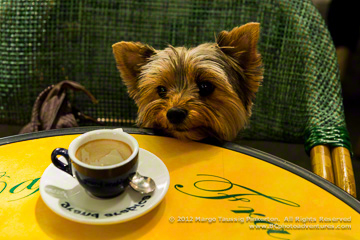 There are times you want to change your lens or pull something out of your camera bag. Most people are honest, but in traveling, a little healthy paranoia can serve you well. I find a quiet spot, if possible to change lenses. A park bench can be convenient, but keep an eye out for people near you. I may grab a cup of coffee, so I can sit down, rest, and discreetly reorganize things. If I put my camera bag down, I slip my foot through the strap and tuck it under a table or chair away from possible fiddle fingers.
There are times you want to change your lens or pull something out of your camera bag. Most people are honest, but in traveling, a little healthy paranoia can serve you well. I find a quiet spot, if possible to change lenses. A park bench can be convenient, but keep an eye out for people near you. I may grab a cup of coffee, so I can sit down, rest, and discreetly reorganize things. If I put my camera bag down, I slip my foot through the strap and tuck it under a table or chair away from possible fiddle fingers.
We have now addressed some of the things to think about while traveling as a photographer, whether in the country or on a city street. Next, we will talk about hints for safe and productive travel.
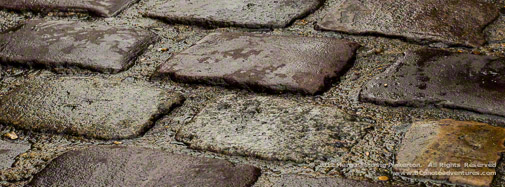
Next: More Travel Tips – On the Road
If you enjoy our blog(s) …
Join us in our Facebook Group where we have a weekly, What-Is-It? challenge, as well as a monthly assignment challenge. This month, we are offering a Hoodman loupe to the winner. Check it out.
Please SUBSCRIBE. It’s easy to do by clicking on the appropriate link at the top of the right column.
Comments on the blog are always encouraged and welcome.
We also hope you will LIKE this and SHARE this blog with those interested in photography by clicking on the buttons below. We also hope you will check out these links:
Great advice for anyone flying with camera gear. It’s great to have a trusted source like this from someone who has traveled all over the world. Kudos for making this information available.
Ron,
Travelling with camera gear can be daunting for those who have not done it extensively. We try to help others avoid some pitfalls and make their lives easier inb knowing what to expect and how to travel with gear as safely as poswsible.
Thanks for your comments and …
Take care,
TBC
Great list. One thing I ALWAYS travel with is a 6 or 12 ft extension cord. Outlets in hotels always seem to be behind furniture so this makes things a lot easier. PLUS you can plug in 3 devices to it. And it allows me to use the most convenient place FOR ME to use my laptop and do my charging.
I also use this with my International Power Converters.
Linda,
Great addition to the list. We always carry them, too!
Thanks for writing and sharing this great tip.
Take care,
TBC
I can confirm the importance of lens hoods from personal experience. While on the workshop in Belize, I lost my footing on a slippery river bank and fell with my camera. The lens hood shattered and saved the lens front element from being destroyed. As for camera straps, I personally use the Upstrap on my Nikon because it has no identifying labels and stays on my shoulder very well. On my Leica M9, I use a PacSafe strap that has metal inside the strap. It works very well. Leica makes a great table top tripod that Arnie told me about. I put a RRS ball head on top so that I can use it just like my regular tripod and monopod. It’s a great way to brace the camera against your body when in foreign locations that don’t allow tripods. See you two in Miami! Dave
Thanks, Dave, for writing and sharing your preferred camera straps. Also, stories such as yours from Belize are worth so much more than mere words in a blog.
We had another friend/participant join us in Virginia some years back. She, too, fell, and while she had a lens hood on that protected the lens, she also had a UV filter that shattered. She was so lucky that it didn’t scratch her very expensive lens. As it was, we turned the lens facing down and bit by bit, extracted the broken glass!
Take care, and yes, see you in Miami,
TBC
When my filter would NOT come off my lens (Even Arnie tried), my husband managed to remove it with a lightweight, circular rubber jar opener. I always pack one now : )
Great suggestion, Bonnie. Arnie and I do not use filters much at all. A thin, circular Polarizer is one, and a neutral-density filter is the other. Otherwise, we prefer to work without filters. After all, that’s what lens hoods/shades are for!
We hope you have your lens hoods in your camera bag now!
Take care, and thanks for writing!
TBC